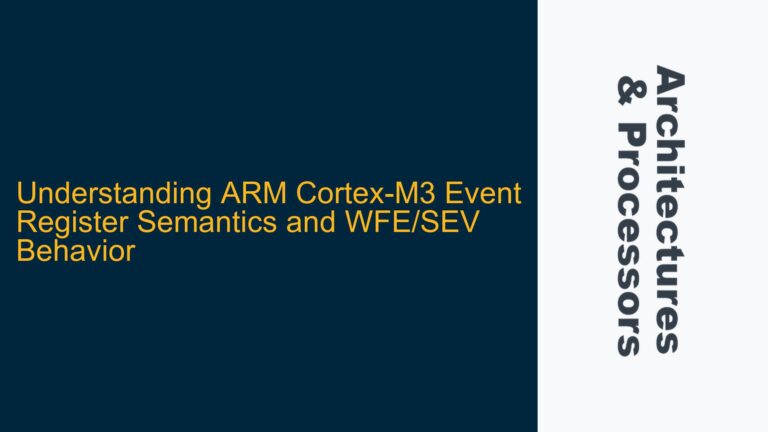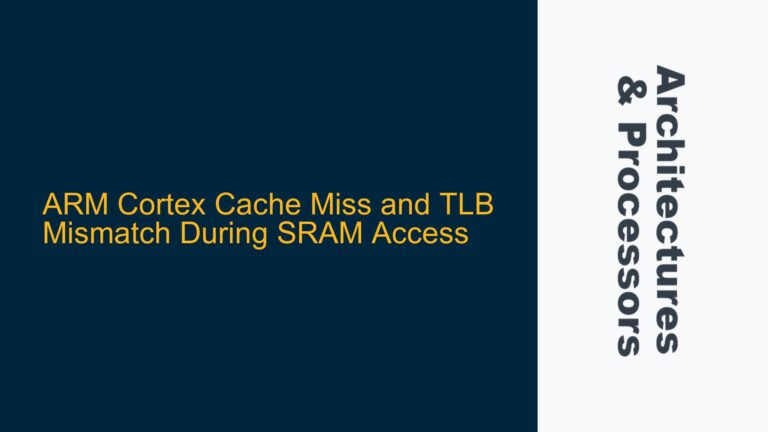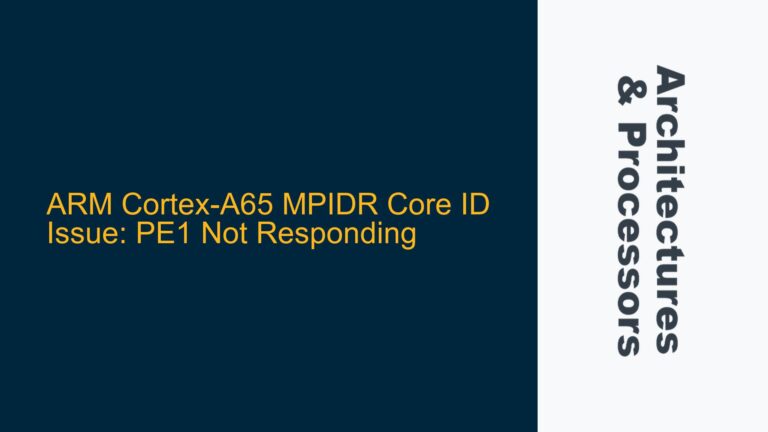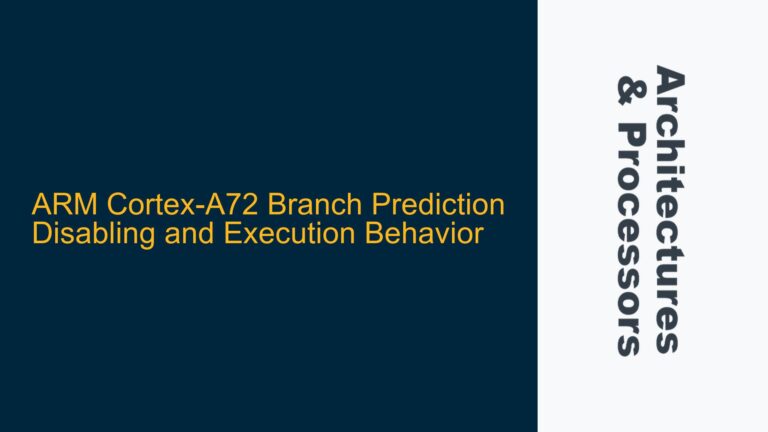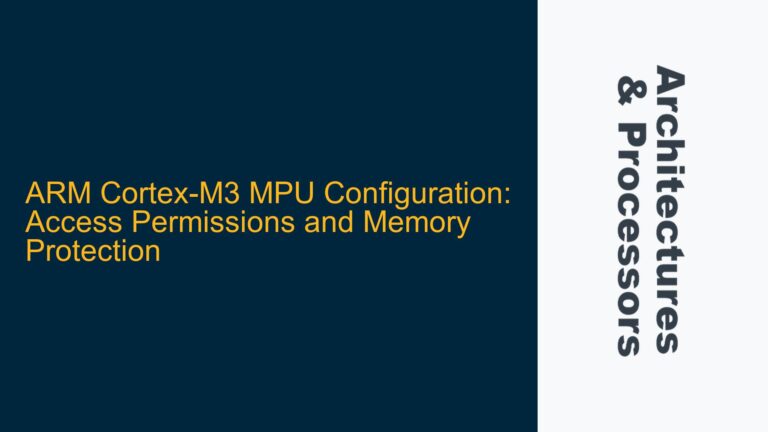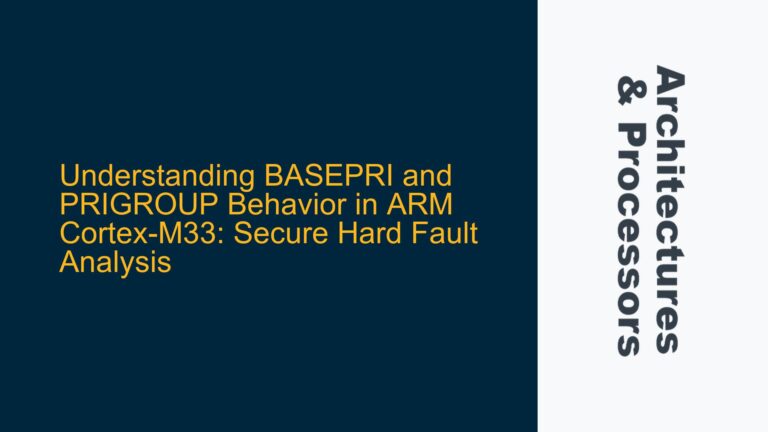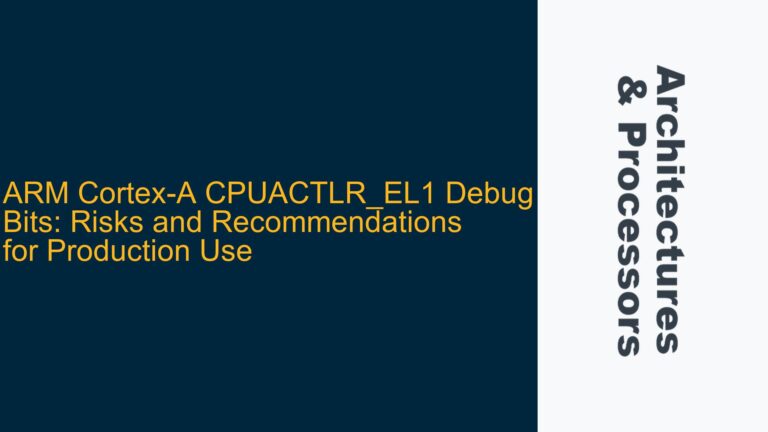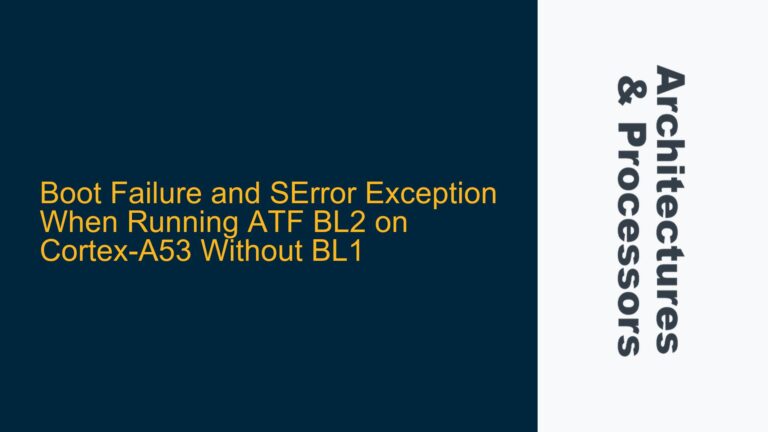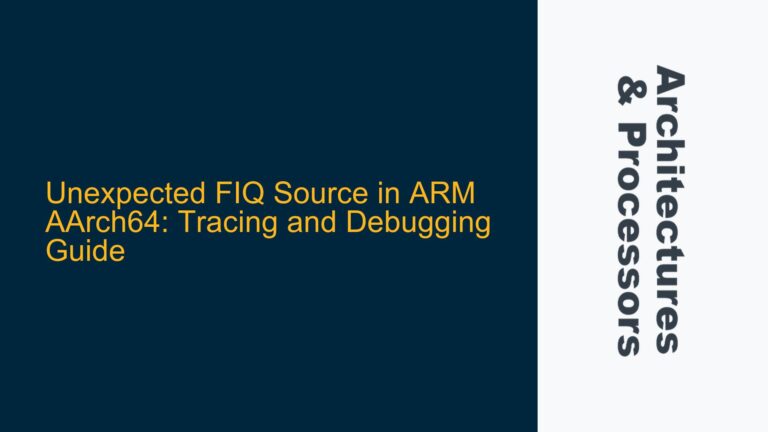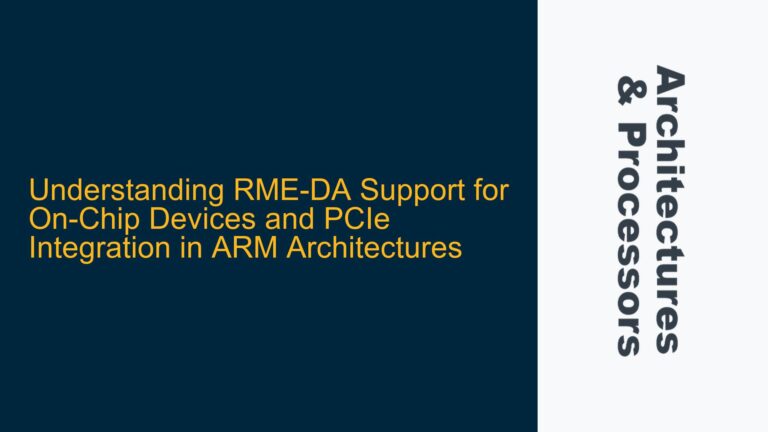ARM Cortex-M3 Event Register Semantics and WFE/SEV Behavior
ARM Cortex-M3 Event Register Behavior During WFE and SEV Operations The ARM Cortex-M3 processor includes a 1-bit Event Register (ER) that plays a critical role in managing low-power modes and synchronization between threads or interrupts. The Event Register is closely tied to the Wait For Event (WFE) and Send Event (SEV) instructions, which are used…
